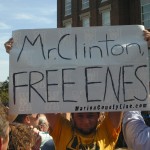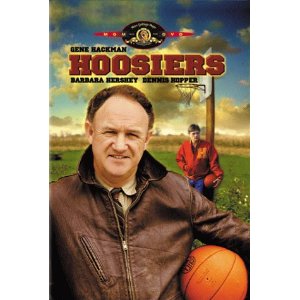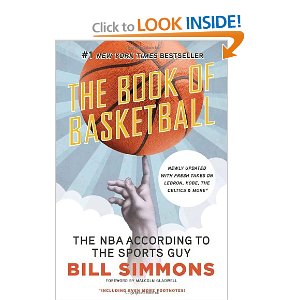An uninformed visitor to my old Kentucky home this week might conclude that they’d mistakenly walked onto the compound of a Prozac-fueled utopian cult. An odd but euphoric delirium had descended upon the hills, hollers and hamlets of the Bluegrass State. Men and women walking more upright, a bounce in their steps, a huge grin on their faces. You couldn’t meet a stranger: In grocery stores and city parks and shopping malls, neighbors who months before felt nothing in common were now greeting each other with warm words, high fives, and fist bumps. Weeks from now, we’ll return to our regional camps, our partisan corners. But for now, we’re united; the sun’s shining just a bit brighter.
The Wildcats have once again made the Final Four. March Madness matters.
I’m often asked by my friends from urban America how a Jewish pischer like me could win statewide election in an inner notch of the Bible Belt. It’s simple: There’s only one state-sanctioned religion in the Commonwealth, and that’s Wildcat basketball. Besides, Kentucky features some of the most rabid anti-Christian hatred in the country. Anti-Christian Laettner, the aptly nicknamed Duke Blue Devil, that is.
It’s been common cause of that same coastal elite to declare the recent demise of college basketball. Just last week, the expositor of all that is right and just — the New York Times — asked “Does College Basketball Really Matter Anymore?” Much blame for the sport’s so-called march towards irrelevancy is directed at the National Basketball Association’s controversial “one and done” rule that permits pro teams to draft 19 year olds who are at least a year out of high school. Since many exceptional underclassmen leave for the NBA instead of staying all four years to graduate, the argument goes, the college talent pool is drained thin, diluting the excitement of the sport.
Even the over-polished-teeth-gnashers who make bank by hyping the sport have decried the rule’s impact on the game: Cue lovable loudmouth broadcaster Dick Vitale, who termed the one-and-done system — in his own inimitable style — as an “absolute joke and fraud to the term ‘student-athlete.’” Meanwhile, the rest of the chattering class’ perennial echo chamber lambasts Kentucky coach John Calipari for daring to master the rules he was given and actually recruit players with the expectation that they would leave for the pros after a year in college. As the Final Four approaches and smaller schools such as Butler and Virginia Commonwealth are adopted by the rest of the country, the Cats are branded with a scarlet “W” and charged with undermining the Athenian ideal of amateur athletics, as well as contradicting the purity of the sport, the value of higher education in general, and the American Way. Quipped Washington Post political reporter/conventional wisdom decoder Chris Cillizza on the eve of an NCAA tourney ballgame last year, tongue lodged only partly in tweet: “Is there anyone in America not rooting for Cornell over Kentucky tonight? And if so, can they rightly be called American?”
A Sarah Palin-like appeal on behalf of a New York-based Ivy League squad?! Just slightly more serious and playful is the needling I’ve endured from my decades-long “frenemy” George—an insufferable Dukie, natch. He asks how can I, a progressive, Harvard-educated, policy-wonk, invest my emotional well-being in a semi-pro team of mercenaries with a league-lagging 2.02 GPA and a pitiful 31 percent graduation rate?
The truth is that since middle school, much of my kind—the jump shot-challenged intelligentsia, that is—have scoffed at the popularity, coddling, and public financing of the jock culture. College is our sacred realm—for academics, scholarship and research, not professional sports-grooming. Like Major League Baseball, why can’t the NBA establish its own minor league system that encourages talented high school athletes to bypass college entirely? Ironically, this argument was advanced on Op-Ed pages nationwide by Richard Hain, a mathematics professor at…wait for it…Duke University.
There’s no question that colleges need to do a better job of preparing student-athletes for the postgraduate work force, particularly since the vast majority will never gasp a whiff of sports-related riches. But scrapping the current system and replacing it with a glorified intramural product would suffocate an invaluable national asset.
For while the literary and media elite have branded cerebral baseball and primal football as our national pastimes; college basketball, particularly here in the heartland, really does matter. And flaws and all, big-time, big-money college roundball is not only the people’s sport; it’s also good public policy.
Basketball’s populist character derives in part from its tiny barriers to entry—all you need is a ball and a hoop to practice alone, and a bona fide game can be played with just a pal or a small group of friends. While its complex choreography and mosaic interpersonal psychodynamics are often underestimated, basketball is the simplest game to understand and appreciate. Ball goes into basket; your team scores. A contest’s time is precise and limited; its court dimensions, clear and uniform: As Gene Hackman famously proved in Hoosiers, the rim is always exactly ten feet from the ground whether at an urban playground or in a professional arena.
Basketball is also the ultimate spectator sport. Unlike radio-friendly baseball or HDTV-enhanced football, hoops are best enjoyed in person. With much, much less downtime that the Big Two, basketball games are filled with relentless exhibitions of artistry in action—colorful feats of intensely-rehearsed talent and gravity-defying acrobatics, while the participants remain in near constant motion. Because the vertical plane is regularly pierced, only basketball can provide those rare, sublime moments of transcendental grace. The courtside crowd isn’t distracted by the weather, food, bands, or tailgating: Until the final buzzer sounds, the game itself is the only thing that matters.
Whether in a high school gym or a professional arena, the game is played indoors, the fans on top of the action, literally involved in the hum and flow of the game, the most intimate among the major sports. In a game in which improvised and instinctual play is the norm, where fatigue and self-confidence are critical to performance, an enlivened and vocal crowd can provide enormous emotional and psychological comfort to the home squad, or can harass and dispirit the visitors. A home crowd—particularly at the college or high school level—becomes, for a few hours at least, a cohesive, interdependent community: Fans who might disagree sharply on matters of politics, religion, lifestyle, or just about any topic, join voices in passionate advocacy of their squad, or, almost as often, in intense criticism of the referees. It’s no coincidence that in many rural communities, most community-building events—graduation ceremonies, formal dances, citizen forums—take place in the high school gym.
Indeed, a potent communitarian strand of populism—in contrast with the over-reported “me first” Tea Party variety—is modeled in the game itself. Bill Simmons’ recent bestseller, The Book of Basketball, reads in places like a Michael Sandel philosophy lecture or a 1968 Bobby Kennedy campaign speech: “The secret of basketball is that it’s not about basketball…Teams only win titles when their best players forget about statistics, sublimate their own games for the greater good and put their egos on hold.” And the greatest of the greats — Jordan, Bird, Kobe — only earned their iconic status after they learned to surrender their own self-interest (high scoring averages) for the common good (winning championships), a noteworthy lesson in unselfishness and the Golden Rule for the boys, girls, and grownups who consider these hardwood heroes role models.
Perhaps this is why college hoops have made such a remarkable and substantive impact on education at the University of Kentucky. The administration understands that many Kentucky families—especially those in the most remote, economically-depressed areas of the state—dream of sending their kids to UK, and it has leveraged roundball prowess to help market and fund all of its major academic initiatives and capital campaigns, including its ambitious long-term effort to transform the school into a Top 20 public research university. And while it’s an unusual, although not a unique, collegiate example, UK basketball not only sustains itself financially; but along with football, its profits help enable the athletic department—with 20 other sports teams—to pay for itself, plus provide millions of dollars to the school for non-athletic scholarships.
There’s also been perhaps no force more powerful in Kentucky, or across America, for religious and racial fence-mending. This year, the Big Blue Nation’s cause celebre was Enes Kanter, a Calipari recruit who was blocked permanently from college ball by the NCAA, citing his acceptance of payment in a professional league in his home country of Turkey. A “Free Enes” campaign grew organically from the grassroots, uniting the overwhelmingly Christian state behind a Muslim — not mind you, a more familiar American convert such as Louisville’s Cassius Clay/Muhammad Ali, but an honest-to-goodness, olive-skinned, Middle-Eastern Muslim. Imagine the impact Kanter could have made on religious tolerance had he been allowed to play and lead the Wildcats to a coveted eighth national title.
Perhaps more poignantly, last year — less than a half century since UK’s all-white “Rupp’s Runts” lost the national championship to Texas Western’s history-making all-black starting lineup — the whitest of all southern states fell in love with a team composed almost entirely of African-American teenagers, and reveled in their soul swagger and hip-hop sentimentality. That winter’s shimmy craze — imitated by thousands of UK fans in public forums and Internet videos — was the “John Wall Dance”: a rhythmic, bicep-flexing arm strut, patterned after a spontaneous public moment of street bravado by the eponymous All-American freshman point guard.
The craze prompted another elite African-American point guard to enter Kentucky lore that February when he stood at Rupp Arena’s center court to perform a hallowed ritual of the Big Blue Nation: After a group of cheerleaders contorted their bodies on the hardwood floor to spell out the first seven letters of the state’s name, Earvin “Magic” Johnson lifted his arms high into the air, and became, for one shining moment, the living embodiment of the letter “Y.” The “Y” tradition borders on a holy sacrament in Kentucky; the modern equivalent of a high priest standing in the middle of the Great Temple, reaching toward the heavens, bringing the blue-attired congregation to its feet and lifting the faithful into frenzied spiritual revival.
But Johnson added a special touch: The legend smoothly transitioned his right arm into a John Wall Dance. The crowd erupted into an authentic, communal embrace of pure joy, radiating off of Magic’s trademark supernova smile. Johnson has no roots in the state, nor any connection to the team, but his gesture united two generations of basketball lovers, and it provided a bond that transcended our differences. That, sports fans, defines populism. And it articulated, without words, why college basketball matters.
Earlier that afternoon, in the State Capitol Rotunda, Magic had waded through the friendliest of mobs—mostly white, the crowd slowly jostling forward, lunging for an autograph, photograph, or simply to touch the towering African-American. A few feet away, the statues of Civil War adversaries Abraham Lincoln and Jefferson Davis stood in stark repose; in their time, that same scene would have conveyed a far different meaning.
Perhaps we as a nation can rely on the power of basketball—among teammates and fans—to help guide us on our journey toward racial harmony. Basketball has helped move us away from a legacy of hate to one where everyone can appreciate the value of a hardwood dance, whether by a young star, hoops legend, rural teenager, or even a recovering politician.
And perhaps we as a people can reserve and pool our natural human instincts to fight injustice and despise what is evil for battle with a legitimate target of universal animosity: the Duke Blue Devils, of course.














Leave a Reply